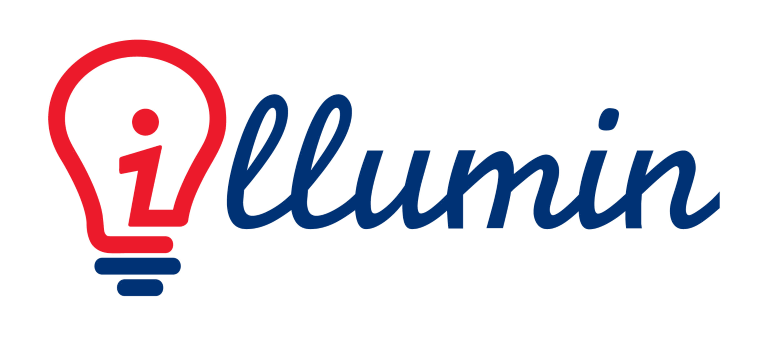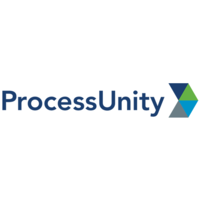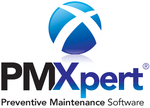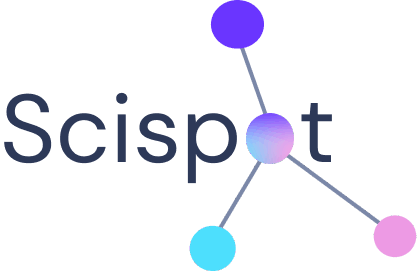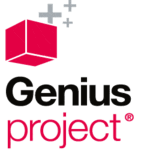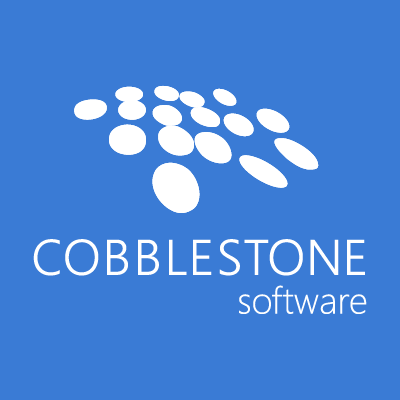What Is Request Management Software?
Request Management Software, also known as Service Request Management Software, is a comprehensive solution that automates and streamlines the process of responding to client or staff requests. It serves as a central center for managing all incoming requests, whether from IT support, customer service, or any other department inside an organization.
Request Management Software is essentially a ticketing system that receives all incoming requests and assigns them to the proper team or individual. This guarantees that requests are neither forgotten or missed, resulting in greater efficiency and client satisfaction. Furthermore, this platform enables easy tracking and monitoring of request status, assuring fast resolution and transparency for both the requester and the support team.
One of the primary benefits of Request Management Software is the ability to develop self-service portals for customers and workers. These portals allow users to submit requests and track their progress without having to contact a customer support person. This not only saves time, but also gives users control over their requests.
Furthermore, Request Management Software has extensive automation features, decreasing the manual labor necessary to handle requests. It may automatically assign tasks, provide notifications and reminders, and escalate requests that are not answered within a set time range. This enables support teams to focus on more important activities and increase productivity.
Another essential part of Request Management Software is its reporting and analytics capabilities. It gives real-time information about the performance of support teams and the whole request management process. This enables firms to find areas for improvement, cut response times, and improve the entire customer experience.
What Are The Recent Trends In Request Management Software?
To remain competitive in today's fast-paced business climate, firms must implement efficient and simplified request management systems. As a result, the need for request management software has expanded dramatically in recent years.
To help you keep up with the latest advances in this field, we've produced a list of the top trends shaping the world of request management software.
1. Automation And Artificial Intelligence (AI): One of the most significant advances in request management software is the use of automation and artificial intelligence technologies. These advanced features not only speed up request processing, but they also improve accuracy and eliminate errors. AI-powered chatbots, for example, can handle a high volume of requests and provide consumers with self-service alternatives, decreasing the stress on IT workers. The usage of automation and artificial intelligence is projected to increase as the technology improves and becomes more accessible to organizations of all sizes.
2. Omnichannel Support: Another trend gaining traction in the request management software market is the use of omnichannel assistance. With a rising variety of communication platforms, people want to communicate with businesses via their preferred channel. Omnichannel request management solutions enable customers to submit requests via numerous channels such as email, social media, and chat, making it easier for them to interact with businesses. This trend provides seamless communication and enhances the overall client experience.
3. Mobile Support: In today's mobile-driven environment, request management software must accommodate mobile devices. As more people work remotely, the ability to submit and follow requests while on the road has become increasingly important. Mobile-friendly request management software enables customers to access the system from any device with an internet connection, making the process faster and simpler.
4. Agile And Collaborative Features: As firms adopt agile approaches, the demand for request management software with agile and collaborative features is increasing. These capabilities enable teams to collaborate in real time, monitor progress, and prioritize requests based on business requirements. Collaboration technologies also improve communication across teams and departments, leading to more efficient request processing and faster resolutions.
5. Integration With Other Systems: Software suppliers are now offering integration options with other company systems to help streamline request management operations. This trend allows firms to integrate their request management software with CRM, project management, and accounting systems, among others. The integration removes manual entry, decreases errors, and gives customers a uniform view of their data, all of which contribute to better overall operations.
Benefits Of Using Request Management Software
Request management software is an extremely useful tool for businesses of all sizes and sectors. This form of software streamlines the process of managing and fulfilling internal and external requests, resulting in increased efficiency and production.
Here are some of the major advantages of adopting request management software:
1. Centralized Request Management: Request management software organizes and manages all requests in a centralized location. This reduces the need for various systems and manual processes, allowing for more efficient tracking, prioritization, and response to requests.
2. Improved Communication: Communication is a critical component of any business, and request management software can help to streamline it. This software frequently contains features like automated email notifications, real-time updates, and collaboration capabilities, which make it easier for teams to interact and collaborate on requests.
3. Increased Productivity: This program automates and centralizes the request management process, eliminating manual and time-consuming processes. This increases productivity and allows employees to focus on more important activities and initiatives.
4. Improved Client Service: Request management software enables firms to provide fast and efficient responses to client inquiries. This might result in enhanced client satisfaction and loyalty, contributing to the company's success.
5. Improved Data Management: Request management software frequently includes data tracking and reporting capabilities, enabling firms to monitor and analyze request data. This can reveal useful insights on trends, patterns, and areas for improvement, allowing firms to make more educated decisions.
6. flexible And Scalable: Request management software is very flexible and can be tailored to meet the unique needs and processes of a company. This makes it a flexible solution capable of adapting to a company's changing needs as it grows and evolves.
7. Cost-Effective: Implementing request management software can lead to cost savings for enterprises. This software can assist minimize the need for human labor and save operational expenses by automating operations and increasing efficiency.
Overall, request management software provides numerous benefits to businesses, such as streamlining procedures, enhancing customer service, and lowering expenses. Companies that invest in this software can improve their operations and drive more success and growth.
Important Factors To Consider While Purchasing Request Management Software?
When it comes to selecting request management software, there are a few key elements to consider to guarantee that you select the best solution for your organization's requirements. These aspects include functionality, usability, integration, and support. Functionality is important since it dictates what the program can achieve for your business.
Before making a purchase, consider your organization's specific requirements and priorities. Does the program include the capabilities and tools that will meet those requirements? Can it handle various request types and workflows? Look for a customizable and flexible solution that can support your specific processes. Ease of usage is another important consideration. Your team should be able to easily grasp and navigate the software.
A complex and difficult-to-use solution can cause irritation and low adoption rates, reducing the success of your request management process. Look for a solution with a straightforward and user-friendly interface, and consider a demo or trial to ensure its usability. Integration is also a significant consideration. Your request management software should work easily with your existing systems and tools, such as CRM or project management software, to eliminate repeated data entry and streamline procedures.
Make sure to ask about the solution's integration possibilities before making a purchase. When choosing request management software, it is also important to consider support. Look for a vendor who provides full customer support, including technical assistance and training. This will ensure that your team can utilize the software's benefits while also troubleshooting any issues that may develop. Other considerations may include cost, scalability, and security.
It's critical to establish your budget and compare pricing plans from various companies. You should also evaluate your organization's future expansion and whether the software can support it. Finally, don't forget to ask about the security measures in place to protect your information.
What Are The Key Features To Look For In Request Management Software?
When selecting a request management software, seek for vital characteristics that will guarantee efficient and effective management of incoming requests. These features will not only simplify your processes, but will also increase client satisfaction.
As a buyer, here are the important things to look for in request management software:
1. Customizable Request Forms: Good request management software should provide customizable request forms that allow you to gather precise information from your consumers. This will help identify the type of request and prioritize it accordingly.
2. Automated Routing And Assignment: The program should be able to automatically route and allocate requests to appropriate team members depending on their expertise or workload. This ensures that requests are not neglected or delayed.
3. Tracking And Reporting: Look for software that allows for real-time tracking and reporting of requests. This allows you to track the status of requests, detect bottlenecks, and make required modifications.
4. Collaboration Tools: Team members must work together to manage requests effectively. Look for software that has collaboration capabilities like conversations, comments, and taggings to improve communication and efficiency.
5. Integration With Other Systems: Your request management software should be compatible with other systems like CRM, project management, and knowledge base applications. This would not only increase efficiency but also create a consistent experience for both employees and customers.
6. Self-Service Portal: A self-service portal enables clients to submit and track requests on their own, which reduces your team's burden and increases customer satisfaction. It should also have a knowledge base or FAQ section where customers can get answers to common questions.
7. Customizable Workflows: Depending on the type of request, multiple workflows may be required. Choose software that allows you to create customized workflows that are tailored to your organization's specific needs.
8. Mobile Accessibility: In today's fast-paced environment, it is critical to have access to request management while on the go. Look for software that supports mobile devices, allowing team members to manage requests and reply to consumers while on the go.
9. Security And Data Protection: Request management entails handling sensitive client information. Make certain that the software you purchase includes strong security features to protect this information from unwanted access or cyber threats.
10. Customer Feedback And Satisfaction: Finally, search for software that has customer feedback and satisfaction features to help you collect insights and enhance your request management operations. This will allow you to continuously improve and deliver better service to your clients.
Why Do Businesses Need Request Management Software?
In today's fast-paced business environment, firms are flooded with requests from employees, customers, and stakeholders. With the increased reliance on technology, these demands take many forms, including email questions, support tickets, and project requests. Keeping track of these requests and ensuring prompt resolution can be difficult without the proper technologies in place. Here's where request management software comes in. It is a centralized system that enables businesses to effectively handle and track all inbound requests.
Here are a few reasons why firms require request management software:
1. Streamlined Workflow: Request management software allows businesses to automate processes and develop workflows to guarantee that each request is sent to the correct team or individual. This eliminates manual handovers and lowers the likelihood of requests falling through the cracks.
2. Increased Efficiency: Request management software can boost efficiency by automating repetitive chores and standardizing processes. This means that employees devote less time to administrative activities and more to value-added jobs, resulting in greater production.
3. Improved Tracking And Reporting: Request management software enables organizations to track and monitor the status and development of requests in real time. This provides significant insights into process efficiency, identifies bottlenecks, and enables firms to make data-driven decisions.
4. Improved Client Experience: Request management software allows businesses to ensure that client requests are resolved on time and with high quality. This leads to increased client happiness and retention, which benefits the bottom line.
5. Integration With Other Systems: Most request management software works with other tools and systems, such as customer relationship management (CRM) and project management software. This provides organizations with a full view of all requests and actions, making it easier to manage and prioritize them.
6. Increased Accountability: Request management software enables firms to assign duties and set deadlines for individual requests. This encourages accountability and guarantees that no request remains unanswered, resulting in improved customer service.
How Much Time Is Required To Implement Request Management Software?
The time it takes to install request management software depends on a number of factors, including your organization's size and complexity, the software supplier you choose, and the level of customisation required. On average, completely implementing request management software might take anything from a few weeks to a few months.
Several stages must be taken during the deployment process, including identifying your organization's present request management processes, designing workflows and automation, and integrating the software with your existing systems. To enable a successful transfer to the new software, employees may need to be trained and onboarded.
The software provider's degree of support and help might also have an impact on the deployment timeline. Some vendors give complete onboarding and training services, whereas others may simply offer basic support. When picking a request management software supplier, keep these factors in mind. Furthermore, the readiness of your firm to embrace a new software system can influence the installation timeline.
To guarantee a successful transition, important stakeholders must be involved and effective communication and collaboration maintained throughout the implementation phase. Remember that the time spent on implementation is an investment in the long-term efficiency and efficacy of your request management operations. With the proper planning and support, installing request management software may be a straightforward and effective process for your company.
What Is The Level Of Customization Available In Request Management Software?
One important element to consider when comparing different request management software choices is the level of customization provided. Customization enables customers to modify the software to their individual requirements, resulting in a more efficient and effective tool for managing requests. Different software suppliers may provide varying levels of customisation, so it is critical to understand your organization's exact needs and compare them to the capabilities available from each alternative.
Here are some important considerations to remember while contemplating the extent of customisation in request management software:
1. User Interface: A request management software's user interface (UI) can have a significant impact on its level of customization. A well-designed and straightforward UI enables simple modification and setting without the need for coding or advanced technical expertise. Look for software that has a drag-and-drop interface or a visual editor so you can simply customize the interface to meet your organization's branding and design preferences.
2. Custom Fields: One of the most significant aspects of request management software is the ability to create custom fields. These are fields that can be added to the request form for users to complete, allowing you to gather the precise information required for each sort of request. Make sure the software allows for infinite custom fields and provides a variety of field kinds (e.g., text, dropdown, checkbox) for flexibility.
3. Workflows: Customizable workflows enable you to automate and tailor the request management software to your organization's own business procedures. Look for software that lets you construct unique workflows based on specific criteria like request type, priority, or user group. This will help to streamline and enhance the request management process.
4. Branding: Users benefit from a more professional and cohesive experience when the request management software is branded with their company's logo and colors. It also helps to establish brand familiarity, which is especially crucial if the software will be used to handle consumer demands.
5. Access And User Permissions: If your organization has many teams or departments handling various types of requests, it is critical to have adjustable access and user rights. This enables you to restrict access to specific features or requests based on user responsibilities, ensuring that sensitive data is only available to those who require it.
Which Industries Can Benefit The Most From Request Management Software?
Request management software is a significant resource that may help a variety of sectors. From small enterprises to major corporations, this software provides a more efficient way to manage client requests, increase productivity, and improve overall customer happiness. If you are thinking about investing in request management software, you should first understand which sectors will gain the most from it.
Let's explore, we will look at the industries that can benefit the most from deploying request management software.
1. Consumer Service And Support: Customer service and support teams are in charge of handling consumer requests. They are responsible for responding to and resolving client concerns, complaints, and feedback. In today's fast-paced atmosphere, request management software can significantly improve efficiency and effectiveness. Automating and structuring incoming requests allows customer service teams to respond faster, decrease errors, and track progress to assure prompt resolution.
2. Human Resources: Human resources departments frequently get a high volume of employee requests, which range from leave requests to cost reimbursement. HR departments can quickly track and handle requests using request management software, saving time and decreasing paperwork. This program also streamlines employee onboarding, training, and performance evaluations. Employees can also easily submit and track their own requests thanks to features like configurable processes and self-service portals.
3. IT And Technology: In today's digital world, IT and technology departments are critical to the seamless operation of any organisation. These departments are constantly besieged with demands such as hardware and software installations, network access requests, and technical support questions. IT teams can use request management software to properly manage and prioritize requests, allowing them to focus on key work and reduce downtime.
4. Facilities Management: Facilities management is responsible for a wide range of responsibilities, including maintenance and repair requests, as well as inventory tracking and administration. Facilities teams can use request management software to keep track of these chores, automate routine operations, and monitor equipment and supply levels. This leads to greater resource management, cost effectiveness, and overall efficiency.
5. Education: In the education sector, several entities rely on service requests, including students, teachers, and administrative staff. Schools and universities can use request management software to improve operations like course registration, leave requests, and facility bookings. This not only increases efficiency, but also improves the entire student and staff experience.
Overall, request management software has the potential to significantly benefit a variety of businesses by automating and streamlining procedures, boosting communication, and increasing productivity. Whether you work in customer service, human resources, IT, facilities management, or education, investing in request management software can help your organization improve its request handling processes, resulting in higher customer satisfaction, lower costs, and increased productivity.
Conclusion
After conducting extensive study and analysis of various request management software choices, it is evident that this sort of software is a necessary tool for organizations of all sizes. It streamlines the process of handling and tracking requests, ensuring efficient communication and prompt resolution of concerns. From small enterprises looking for a low-cost solution to huge organizations in need of comprehensive features and scalability, there is request management software to meet each buyer's specific requirements.
Some important elements to consider while selecting software include the extent of customisation, integration possibilities, user-friendliness, and customer service. Furthermore, the benefits of utilizing request management software are extensive. It can boost customer happiness, increase productivity, shorten response times, and improve overall corporate efficiency.
Businesses can save time and money by automating and centralizing the request management process, freeing up resources to focus on other critical elements of their operations. Before making a purchase, carefully compare the features and pricing plans of several software solutions to choose which one best fits your business goals and budget. Additionally, soliciting comments from other firms or reading reviews and ratings can provide useful insights into the software's performance and dependability.
Overall, investing in request management software can provide tremendous benefits to a firm, making it an excellent investment. Businesses that use the correct software can streamline their request management process and improve their entire operations, resulting in greater success and growth. We hope this buyer's guide has helped you make an informed decision and choose the best request management software for your organization.


